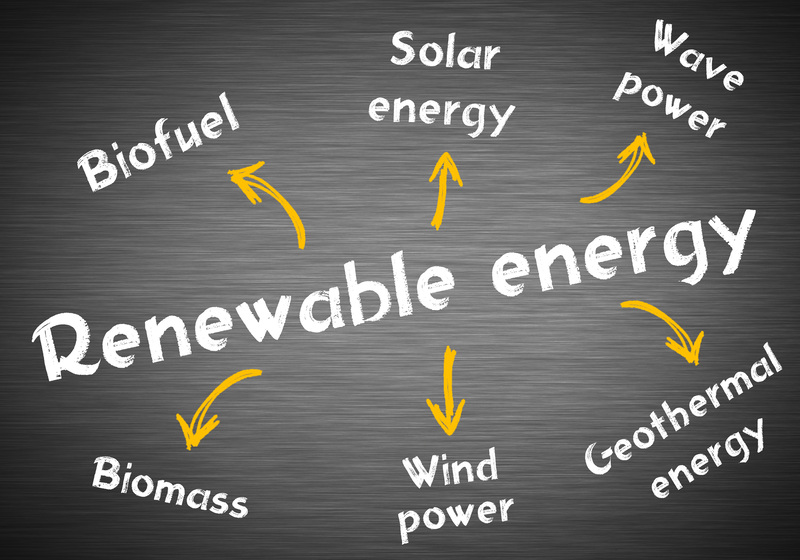A Simple Guide to Eco-Friendly PPE Waste Practices
Personal Protective Equipment (PPE) has played an essential role in safeguarding public health, particularly during the recent global health crises. However, with millions of masks, gloves, and other protective items being discarded daily, eco-friendly PPE waste practices have become crucial for protecting the planet. This comprehensive guide explores sustainable PPE waste management, offering actionable tips for individuals, companies, and communities to reduce their environmental impact.
Why Eco-Friendly PPE Waste Practices Matter
The surge in single-use PPE has contributed to increasing plastic pollution, landfill overflow, and environmental health hazards. Understanding why responsible disposal and sustainable alternatives are vital is the first step in fostering greener habits.
- Environmental Impact: Conventional PPE, like masks and gloves, is typically made from non-biodegradable plastics (e.g., polypropylene, polyethylene).
- Human Health Risks: Improper disposal can contaminate water sources and pose biohazard risks to sanitation workers.
- Wildlife Threats: Discarded PPE often ends up in oceans, where it entangles marine animals and leaches microplastics into the ecosystem.
- Sustainable Future: Adopting eco-friendly PPE waste management ensures that public safety does not come at the cost of environmental harm.

The Basics of Eco-Friendly PPE Waste Disposal
Many people aren't sure how to dispose of their PPE safely and sustainably. Here are some foundational steps for effective eco-conscious PPE disposal:
1. Segregate Used PPE from Regular Trash
To minimize the risk of contamination and facilitate proper handling, always separate used PPE (such as masks and gloves) from everyday household waste.
- Use a dedicated, lined bin for PPE waste.
- Do not mix PPE waste with recyclables unless explicitly stated by your local waste authority.
2. Secure and Contain
Place PPE waste in a sealed bag, especially if it's potentially contaminated. This reduces the risk to waste handlers and prevents the spread of pathogens.
3. Follow Local Regulations
Check with local waste management services or governmental agencies for specific eco-friendly personal protective equipment waste practices in your area. Regulations may differ, especially during public health emergencies.
4. Avoid Flushing
Never flush masks, gloves, or disinfectant wipes down the toilet. These products can block plumbing, damage water treatment facilities, and ultimately pollute waterways.
Best Practices for Eco-Friendly PPE Waste Management
Moving beyond the basics, adopting the following strategies will help create a more sustainable approach to PPE waste:
Switch to Reusable PPE When Appropriate
- Fabric Masks: Choose washable, reusable masks made from organic cotton or bamboo. Always sanitize them after each use according to health guidelines.
- Reusable Face Shields: Opt for shields that can be disinfected and used multiple times.
*Note: In some high-risk or medical settings, single-use PPE remains necessary for safety. Always prioritize health guidelines.
Opt for Biodegradable PPE Options
With advances in material science, a range of eco-friendly disposable PPE options exists. Look for:
- Bamboo fiber masks
- Biodegradable gloves (made from cornstarch or natural rubber)
- Compostable gowns and aprons
Participate in PPE Recycling Programs
Some organizations offer collection and recycling services for used PPE. These programs convert waste into energy, new plastic products, or construction materials.
- Check if your workplace, pharmacy, or local municipality participates in specialized PPE recycling schemes.
- Organizations such as TerraCycle accept bulk mask and glove waste for recycling.
Reduce Overall PPE Consumption
Conscious consumption is a powerful tool in reducing environmental impact. Here's how individuals and businesses can limit waste:
- Assess real need: Only use PPE when essential -- for instance, reuse fabric masks for daily errands and reserve medical-grade masks for at-risk interactions.
- Encourage digital meetings and remote work to reduce in-person contact and the need for PPE.
Creating an Eco-Friendly PPE Waste System at Home
Everyone can implement a sustainable PPE waste practice in their household. Here are essential steps for families and individuals:
Designate a PPE Waste Bin
- Place a lined bin at your home's entry point.
- Clearly label it for PPE only, to avoid confusion.
Sanitize Hands and Surfaces
- Wash your hands after handling used PPE.
- Regularly clean the bin's outer surfaces and the area around it.
Seal and Dispose Responsibly
- Seal used PPE in a bag before placing it in the main trash.
- Follow municipal guidance for disposal and avoid littering or open dumping.
Workplace Strategies for Sustainable PPE Waste Management
Offices, factories, and healthcare facilities generate significant quantities of PPE waste. Here's how organizations can tackle the challenge:
Develop a PPE Waste Management Policy
- Include eco-friendly disposal protocols in occupational health & safety documents.
- Provide employee training and regular updates on sustainable PPE waste practices.
Install Clearly Marked PPE Collection Bins
- Place bins in high-traffic and high-use areas (entrances, locker rooms, break areas).
- Use color-coded or labeled bins to prevent cross-contamination with recyclables or compostables.
Partner with Eco-Conscious Waste Handlers
- Research and contract with disposal companies that specialize in PPE recycling or energy recovery.
- Request documentation or proof of environmentally responsible handling for regulatory compliance.
Promote Reusable PPE Among Employees
- Provide washable cloth face coverings as part of PPE kits.
- Offer incentives or subsidies for staff who choose reusable options.
Innovations and New Approaches to PPE Waste
The future of eco-friendly PPE waste solutions is bright, thanks to new research and technological developments:
Biodegradable and Compostable PPE
Scientists have developed masks and gloves from natural polymers like polylactic acid (PLA) and plant fibers. These products can break down in composting facilities, reducing long-term waste.
PPE Upcycling Projects
Some creative initiatives transform used PPE into useful products like construction materials, paving blocks, or even fashion accessories. Supporting or donating to such projects helps close the waste loop.
On-Site Sterilization and Reuse
Certain hospitals and laboratories have adopted autoclave or UV sterilization technologies to decontaminate high-quality masks for limited reuse, cutting down on single-use items.
Community-Level Action: Making a Bigger Impact
Communities play a vital role in promoting responsible PPE disposal and reducing environmental footprints. Steps include:
- Awareness Campaigns: Organize drives to educate the public about safe, green PPE disposal.
- Accessible Collection Points: Set up publicly available, well-marked PPE drop-off bins in parks, markets, and transit stations.
- Collaboration: Encourage partnerships between local authorities, environmental groups, and businesses for joint recycling or upcycling initiatives.
Regulations and Certifications for Eco-Friendly PPE Waste
Compliance with environmental standards is vital for organizations aiming to implement eco-friendly PPE waste management systems. Watch for:
- ISO 14001 (Environmental Management Systems)
- OSHA and WHO guidelines on hazardous and infectious waste
- Third-party eco-certifications for suppliers
Always consult updated local, national, or international policy for the latest requirements.
How to Raise Awareness and Educate Others
Fostering widespread adoption of eco-friendly PPE waste practices requires broad-based engagement:
- Share facts about PPE pollution and personal responsibility on social media.
- Host (virtual or in-person) workshops on safe disposal and sustainable alternatives.
- Design posters and guides for distribution in public spaces or workplaces.
Role of Social Responsibility in PPE Waste Reduction
When communities and individuals see themselves as stakeholders in environmental health, sustainable habits grow organically. Lead by example, and others will follow.
Common Myths About Eco-Friendly PPE Waste Practices
- Myth: "All PPE must go in the trash -- recycling is impossible!"
Busted: Specialized recycling programs and biodegradable alternatives do exist, so investigate your options. - Myth: "Reusable PPE isn't safe."
Busted: With proper sanitization, cloth and reusable options provide both protection and eco-benefits for daily use. - Myth: "Eco-friendly PPE is too expensive."
Busted: While upfront costs may be higher, long-term savings arise from reuse and bulk purchasing.

Resources for Further Learning
- World Health Organization: Safe management of wastes from healthcare activities
- Environmental Protection Agency: EPA and Coronavirus (COVID-19)
- Ocean Conservancy: Trash Free Seas Initiative
- TerraCycle PPE Recycling: TerraCycle PPE Zero Waste Boxes
Conclusion: Embracing Sustainable PPE Waste Habits
Eco-friendly PPE waste practices are not just trends; they are a necessity for a cleaner, healthier planet. Every mask, glove, or apron disposed of responsibly prevents plastic pollution and protects ecosystems. By choosing sustainable alternatives, separating and securing your waste, participating in recycling initiatives, and educating others, you can make a significant and positive impact.
Let's commit to a future where personal protection doesn't come at the environment's expense. Together, by embracing practical and simple eco-friendly PPE waste solutions, we can build resilient communities, preserve natural beauty, and safeguard public health for generations to come.